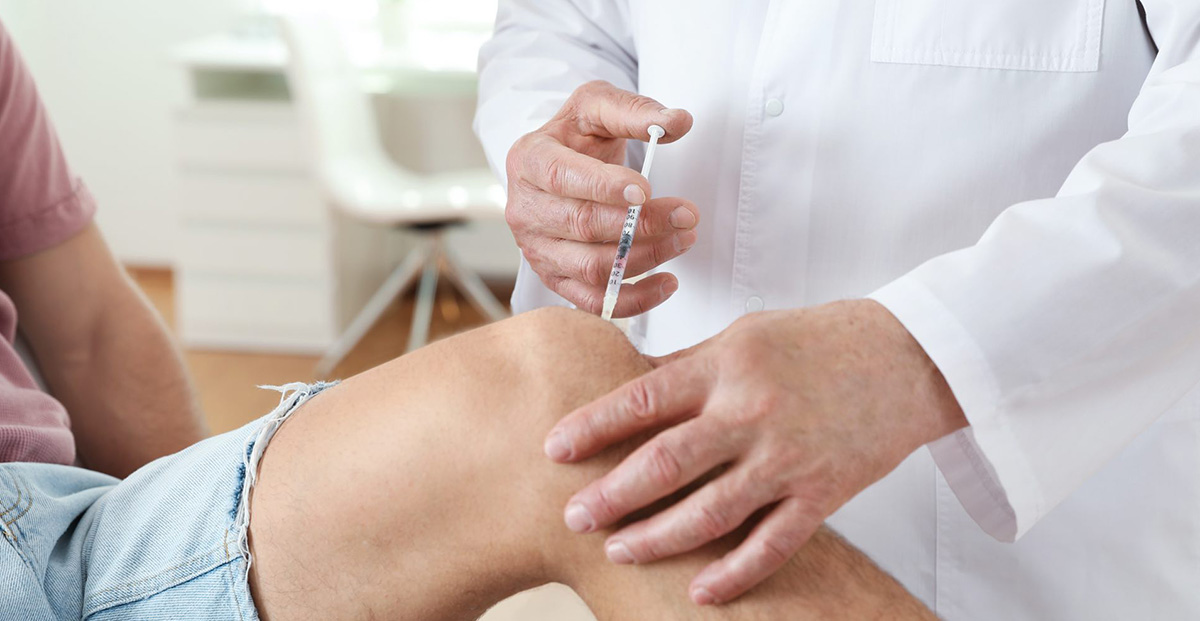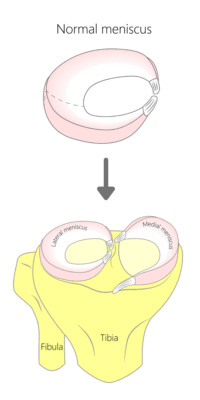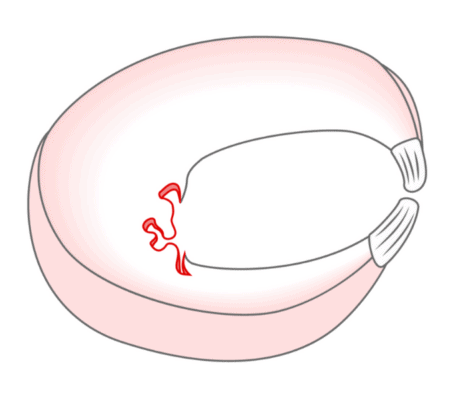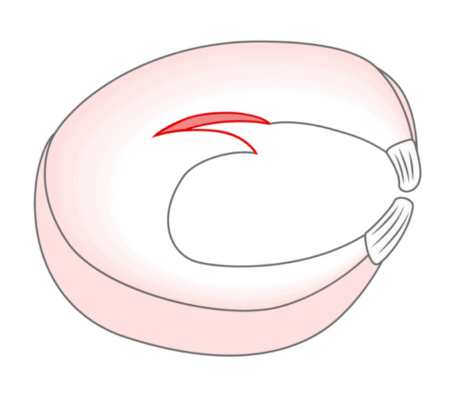
Meniscus Tear Recovery Time Without Surgery
The meniscus is a C-shaped piece of cartilage located in the knee that acts as a cushion between the thigh bone (femur) and shin bone (tibia). Each knee has two menisci, one on the outer edge and one on the inner edge, which help to stabilize the joint and absorb shock during movement. A meniscus tear is a common knee injury, especially among athletes, older adults, and those involved in activities that require twisting or rotating the knee.
A meniscus tear can present with a variety of symptoms, which may include:

Meniscus tears can result from a variety of activities and conditions:

Yes, since the meniscus is a living tissue, there are parts that have good blood circulation, and tears in those areas heal best. Physical therapy can be effective in healing some tears, but frequently, the body needs a helping hand to facilitate and speed up the process. That’s where OrthoReNew’s regenerative orthopedic procedures come in.
At OrthoReNew, we invented a new approach to orthopedic care we call Interventional Orthopedics. This minimally invasive alternative to meniscus surgery uses ultrasound-guided technology to precisely inject your own bone marrow concentrate — which contains stem cells — directly where it’s needed in the joint.
The cells in your bone marrow concentrate work at the site of your injury to promote your body’s natural healing abilities to treat the tear and avoid surgery1.


In most cases, knee surgeries require months of recovery and, frequently, additional months of painful rehabilitation to regain strength and function. The exact length of this recovery varies with the type and severity of the tear, the procedure performed, and the patient’s health status, but it can be as long as six months.
OrthoReNew procedures are intended to help avoid the side effects of surgery and support the healthy, cushioning environment the meniscus provides for the knee. Generally, the recovery time is much shorter than with surgery, and patients can return to normal daily activity levels within a matter of weeks and to more active sports within a few months.

Frequently Questions.
Here are some common question about treatment.
The meniscus is a cushion of cartilage between the bony ends (condyles) of your femur (the bone in your thigh) and tibia (the bone in your shin). Each knee has two menisci: a lateral meniscus and a medial meniscus.
Together, they reduce friction during movement, help the femur and tibia fit together, distribute your body weight across the knee, act as a shock absorber, help distribute fluid that lubricates the knee joint, and protect the gliding cartilage within the knee.
Tears of the meniscus can be the result of wear and tear on the joint or can occur when there’s an injury, such as some type of sports trauma.
The meniscus has a red zone — the outer third of the meniscus — with a good blood supply and a white zone — the rest of the meniscus — with no blood supply. Torn cartilage in the red zone has the potential to heal, particularly in those younger than 30, while tears in the white zone rarely heal due to lack of blood supply.

Research shows that surgery for a torn meniscus is overprescribed and often no more effective than physical therapy.2 Unfortunately, patients are not always informed of the low success rate of these procedures.
Whether patients have a partial meniscus “clean-up” (a piece is surgically removed) or a complete meniscectomy, outcomes are often unsuccessful. Both procedures change knee biomechanics and may later result in knee arthritis.
If you have a torn meniscus, you may experience knee pain or mechanical limitations. Some people have constant pain, some have intermittent pain, and others have no pain at all.
Unless the torn meniscus has locked the knee, many people with a torn meniscus can walk, stand, sit, and sleep without pain. Other possible symptoms include:
Sometimes nothing, at least initially. If you have no pain or mechanical issues in the joint, you may choose to wait to see if it heals on its own. Depending on the type and severity of the tear, you may have pain, stiffness, and reduced function. There’s also the possibility of developing knee arthritis as a result of the damage.
Tears that occur in the red zone of your meniscus and have the best blood circulation heal the best with regenerative orthopedic procedures. The tears we see and treat most often are listed below; however, other types of tears may also benefit from regenerative orthopedic procedures. After a thorough examination and consultation, your OrthoReNewpractitioner can answer this question more definitively.

These tears usually involve a small percentage of the meniscus and do not have the ability to heal on their own because they occur in an area that does not have a good blood supply. Flap tears are the type most commonly “trimmed” or “shaved”, (removed) leading to long-term issues.

The entire inner rim of the medial meniscus can be torn in what is called a bucket handle tear. These tears usually occur in an area of good blood supply in the meniscus

These tears of the meniscus are usually seen as a part of the overall condition of osteoarthritis of the knees in older adults and cause the menisci to fray and tear in multiple directions.
consistent MRI finding associated with pain is swelling in the bone called bone marrow edema (BME) or a bone marrow lesion (BML). Current research on knee pain due to arthritis has shifted from cartilage loss to this bone marrow swelling.